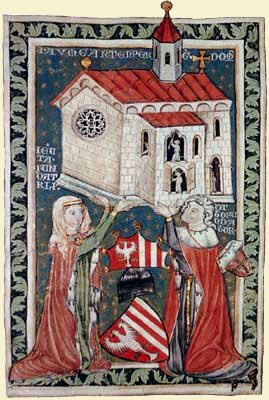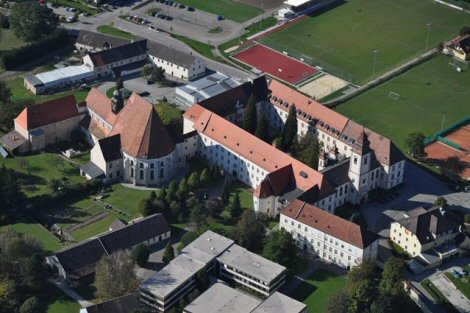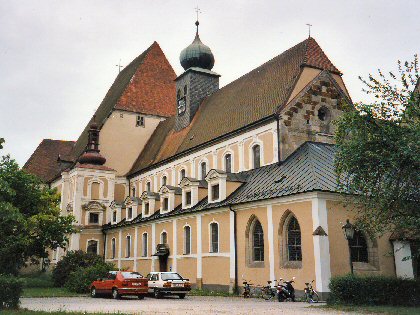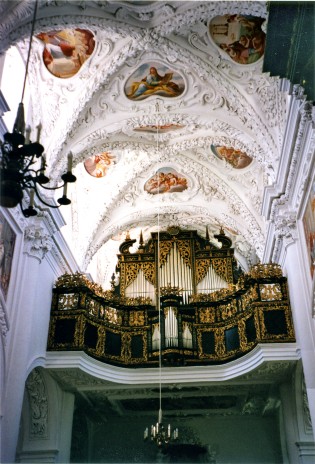In Upper Austria, in the district of Perg in the Mühlviertel, a little away from the Danube, lies the former Baumgartenberg Cistercian monastery. The monastery was founded in 1141 as a daughter monastery of the Cistercian abbey Heiligenkreuz. The founder was Otto von Machland from the family of the Lords of Perg.

1243 saw the consecration of the late Romanesque collegiate church. In 1426 and 1432 the church and monastery were burned down by the Hussites, but already from 1434 the church and monastery were rebuilt in late Gothic style. The baroque reconstruction of the monastery and church was started in 1649 by the builder Antonio Carlone, but could not be completed due to financial difficulties.
In 1782 the monastery was abolished by Emperor Joseph II and used as a penal institution for a longer period of time.
In 1865 members of the Order of the Sisters of the Good Shepherd of Suben came to Baumgartenberg and took over the former Cistercian monastery. They dedicated themselves to the care of girls who were difficult to bring up. Today they run a boarding school for girls and various educational institutions (since 1995 also the Europagymnasium vom Guten Hirten).


The medieval construction stages of the high choir, the vestibule and the raised nave roof are clearly visible. The western wall with its typical Romanesque portal dates from the 12th century.
In the baroque period, most of the church was redesigned both inside and out. Today it serves as a parish church.

A view of the baroque ceiling (Carlone workshop) and the organ. The organ was originally built by the Passauer Freundt in the 17th century and later extended and restored.


Danube cycle path